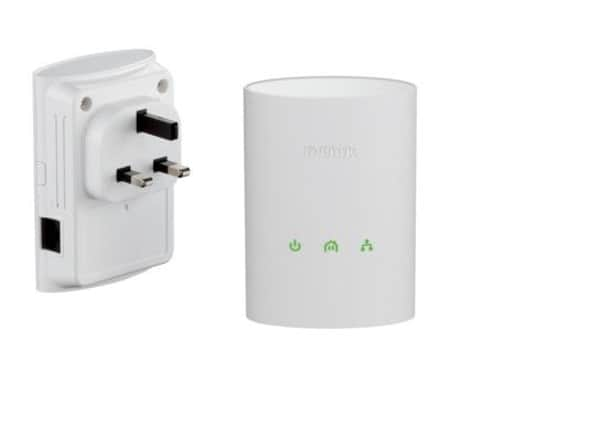Why it pays to be plugged in


Wi-fi is perfect for connecting portable devices like phones, tablets and laptops to the internet, and an increasing number of set-top boxes and the like are also now wireless-enabled. But it isn’t the only option for connecting your home – and for many smart TVs and even some games consoles, it’s not an option at all.
However, where wi-fi won’t go, Powerline units will. These little boxes plug into regular 13-amp sockets and use the mains wiring under your floors and behind your walls to connect to each other. For devices with only wired internet connectivity, they do away with the need to festoon your skirting boards with cables from the router.
Advertisement
Hide AdAdvertisement
Hide AdPowerline, also known as Homeplug, predates wi-fi but the technology is not outdated. In fact, in some circumstances it’s faster and more stable. It also has the benefit of needing no set-up or installation; you simply buy a pair of adapters, plug them in and press the button on each one to let them “find” each other. One adapter then plugs into a spare ethernet socket on the back of your router; the other connects to your device in another room. You can add more to the circuit later, if you like.
Powerline pairs cost from £20 on the high street, but as with all technology, the pricing and labelling seems designed to confuse, with a myriad of different connection speeds available. The faster the speed rating the better, but in practice your house wiring may be the limiting factor. Old houses especially may be less data-friendly – and you may find huge discrepancies between different rooms and even between sockets on opposite walls.
I hooked up a £20 pair of On Networks adapters from Currys, rated at 200 megabits per second, to an Xbox game console and got fairly decent data throughput from a socket behind the sofa – fast enough to stream high-definition video from the internet – but only a sporadic connection from the plughole next to the console itself. By way of comparison, the wi-fi connection on my laptop was much faster, but the difference narrowed dramatically in a room downstairs. In a more recently-wired house, you can expect a faster pair of Powerlines to match or out-perform wi-fi.
It’s with smart TVs and set-top boxes that Powerline comes into its own. The latest YouView boxes, which combine Freeview with the iPlayer, don’t support wifi at all, so unless your router is close at hand, you’re more or less forced to use a pair of these units. If you’re handy with mains wiring, you can install them as neat, flush wall sockets rather than plugs - and you can buy models with “pass-through” sockets, which don’t take up a valuable plughole behind your telly.
Look at it this way - you pay more than enough for your household electricity; you may as well get the most from it.